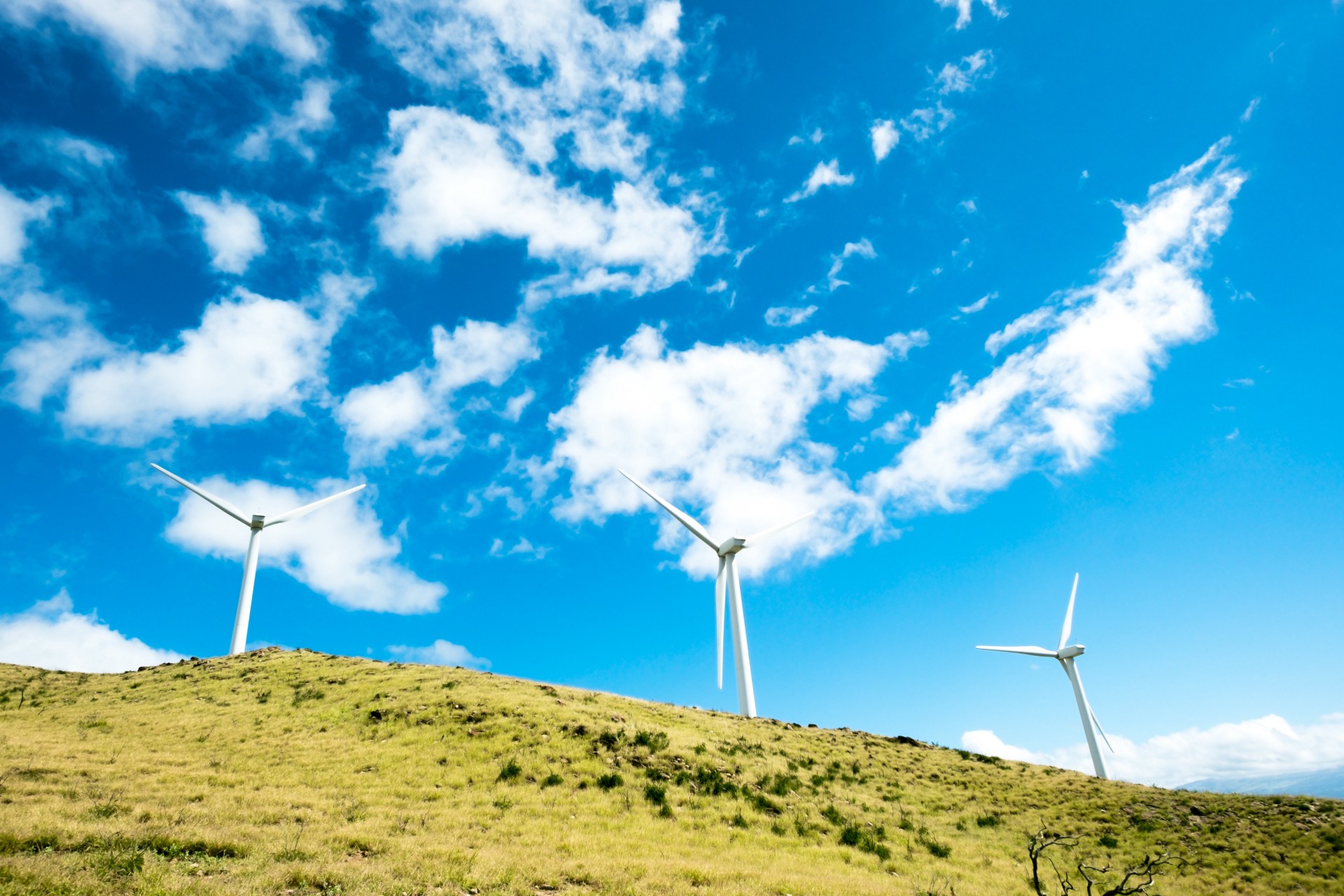Technology alone won’t save us, but it will help win the next 10-year climate challenge. Innovation policies, trade policies, carbon pricing, and other strategies are all tied together in the World Bank report that shows how the way to be on track with the Paris Agreement is not only necessary but also possible.
The climate change challenge is daunting. The world is far from achieving the Paris Agreement’s goal of keeping global warming ‘well below’ 2°C and pursuing efforts to limit temperature increases to 1.5°C. Countries’ climate commitments are far too low and are carrying the planet towards a warming scenario of about +3°C by the end of the century. But, how would we react if someone told us that with existing and commercially proven low-carbon technologies we can make a substantial contribution to achieving the Paris Agreement goals? That we already have the low-carbon technology we need, at least for the next decade?
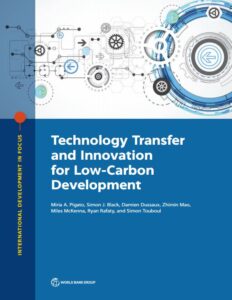 This is the perspective employed by the World Bank in the report “Technology Transfer and Innovation for Low-Carbon Development”. The book seeks to shift the debate on how effective policies can support transfer of low carbon technologies while setting the stage for the necessary future innovations. A perspective that builds on what we have today, without forgetting the need to look for new solutions and new technologies. Opening a positive viewpoint that intends to serve as “a call to action”, as the authors write in the first lines of the book.
This is the perspective employed by the World Bank in the report “Technology Transfer and Innovation for Low-Carbon Development”. The book seeks to shift the debate on how effective policies can support transfer of low carbon technologies while setting the stage for the necessary future innovations. A perspective that builds on what we have today, without forgetting the need to look for new solutions and new technologies. Opening a positive viewpoint that intends to serve as “a call to action”, as the authors write in the first lines of the book.
The report was presented and discussed with RFF-CMCC European Institute on Economics and the Environment (EIEE) researchers in a webinar given by Miria A. Pigato, a lead economist and climate lead in the World Bank’s Macroeconomics, Trade, and Investment Global Practice, and Simon J. Black, an economist in the World Bank’s Climate Change Group.
Technologies exist but need to be diffused
“This report tells us that solving the climate crisis is actually possible, as we already have the tools and technologies needed to achieve most of the emissions reduction necessary to reach the Paris commitments”, affirms Miria A. Pigato in introducing the book. “But these low carbon technologies need to be transferred rapidly and on a massive scale” to developing countries where most of the future emissions are expected. “Unfortunately, this is not happening at the scale needed.”
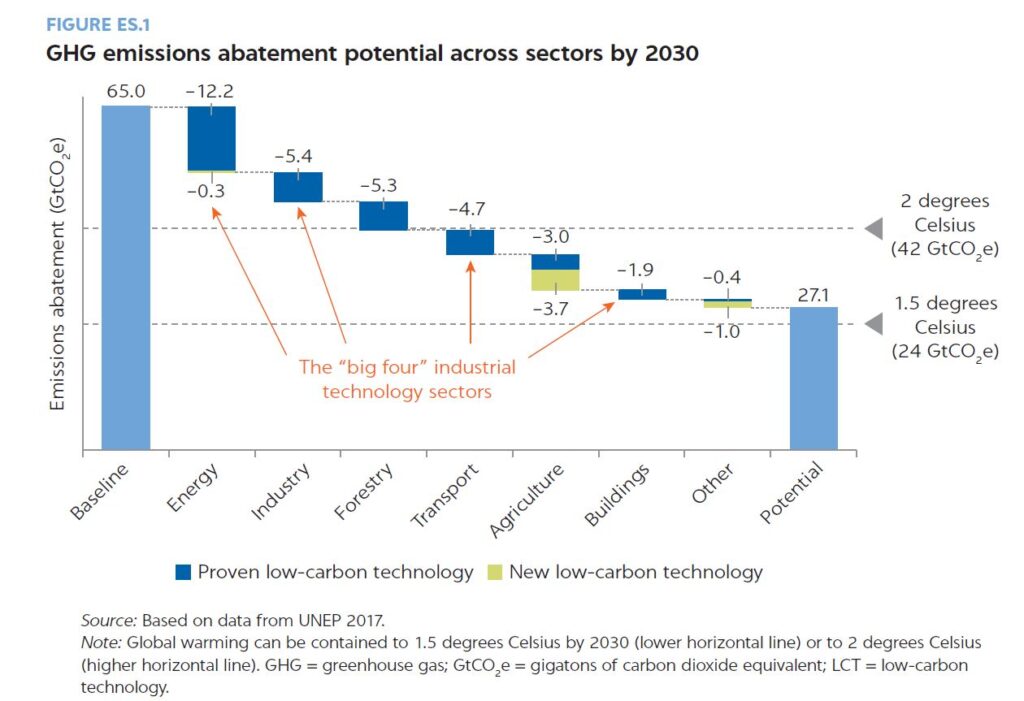
Specific technologies in existence across key economic sectors (including energy, industry, transports, and construction), if diffused rapidly and at scale, could narrow the emission gap of the next decade by almost two-thirds, explain the authors in the report (Fig.1).
Indeed, the book presents a series of concrete policy recommendations to speed-up decarbonization. Notably, policies are needed to support the transfer of low-carbon technologies, especially from the developed to the developing world, while stopping deforestation and continuing the search for new solutions through technological innovation.
Low-carbon technology transfer is an opportunity
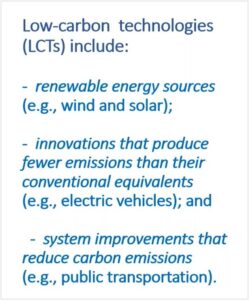
“Transferring low-carbon technologies is not just a necessity for climate change, but an opportunity for developing countries to grow better, in a sustainable way” explains Pigato.
As the report states, low carbon technology transfer not only means combatting climate change. It also allows for improved energy supply and energy security, accelerates productivity growth, raises employment and competitiveness, and improves public welfare and environmental quality. Thus, policies to accelerate low-carbon technology diffusion and innovation can contribute to a variety of development goals simultaneously.
“If climate change is going to be mitigated, we need a dramatic increase in low-carbon technology trade. Clean technologies are more complex than brown technologies, necessitating a broader variety of inputs. As a result, they have higher knowledge spillovers, which are essential for development. Therefore, countries that export more complex goods tend to grow faster. There is a big opportunity here”, says Simon J. Black.
In a context of low political will, opportunity is a lever with which to motivate action. And action is needed. The latest Emissions Gap Report warns that countries must increase their Nationally Determined Contributions threefold to achieve the “well below 2°C goal” and more than fivefold to achieve the “1.5°C goal”.
Who are the low-carbon innovators?
The World Bank report shows that today the four biggest innovators are high-income countries: Japan, United States, Germany, the Republic of Korea. China follows in fifth place, while other middle-income countries such as India, Brazil, and Mexico are farther behind. However, despite China being a growing global leader in low-carbon technologies, its share of inventions is still small relative to its share of global carbon emissions (Fig.2).
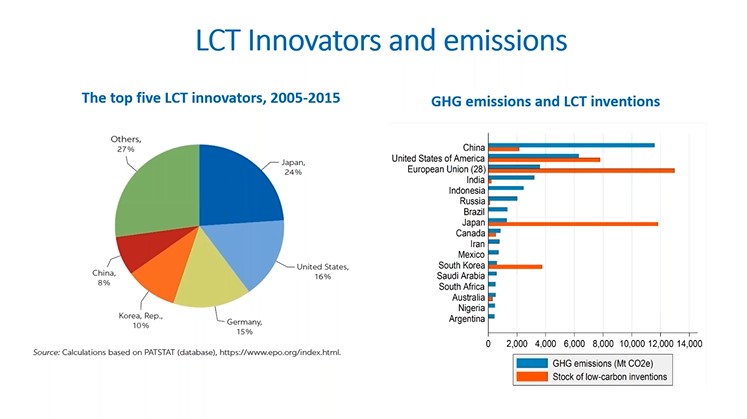
Data shows that low-carbon technological innovation is highly imbalanced across countries. Those who are innovating more in climate change mitigation are not necessarily those who will contribute in the future through emissions growth. Low-income countries produced almost no innovations in low-carbon technologies during the period from 1990 to 2015. To support mitigation efforts, it is essential that low-carbon technologies (LCT) are transferred between innovating to emitting countries. This means an acceleration in global trade of LCT.
Moreover, despite innovation in low-carbon technologies is growing faster than innovation in other technologies, almost no new LCTs are being transferred to low-income countries, warns the report. High-income countries account for the largest shares of both low-carbon technologies imports (Fig. 3) and exports (Fig. 4).
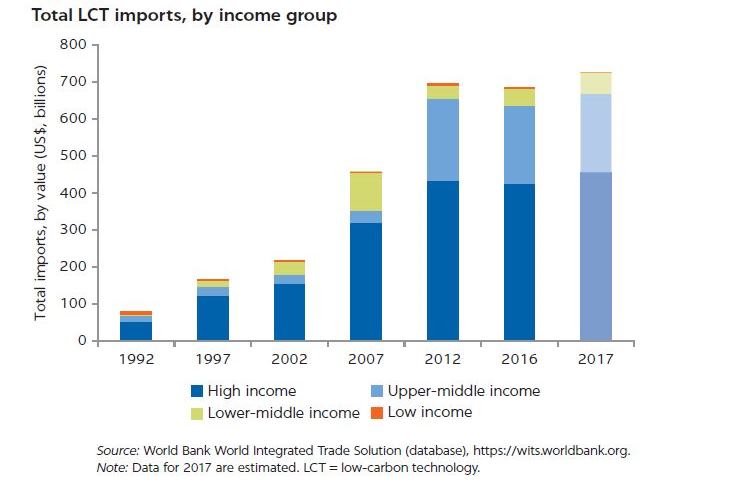
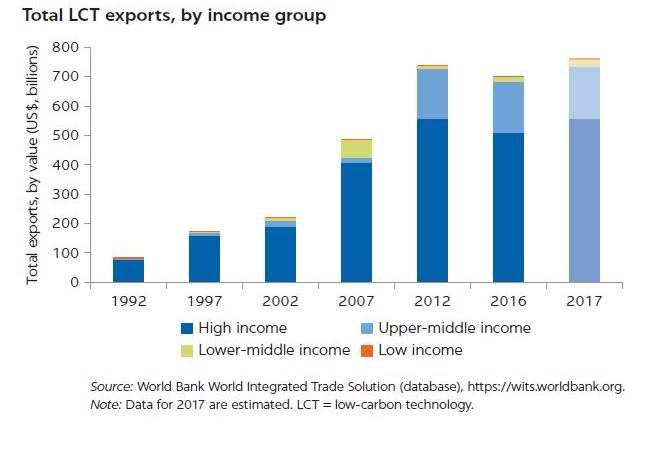
Policies count
The importance of diffusing technologies worldwide to achieve mitigation and adaptation goals is emphasized by the scientific community that is looking for solutions to address climate change. Indeed, the Sixth Assessment Report of the IPCC (Intergovernmental Panel on Climate Change), whose synthesis is due in 2022, will be the first of the IPCC report series to include a chapter on “Innovation, technology development, and transfer”.
“It’s not the technology itself that will save us”, affirms Black during the webinar. “We need to diffuse the technology we have. And it is not happening at the scale that we need in order to mitigate climate change. Specifically, it’s not happening in developing countries and emerging markets, who are neither innovating themselves in these technologies nor importing them at a sufficient rate. We need sound policies to incentivize this diffusion. For example, carbon pricing is needed not just to disincentivize CO2 emissions, but also to encourage emissions’ abatement through innovation. This includes carbon dioxide removal technologies (CDR). Currently, there is no profitable way of removing CO2 from the atmosphere. But if there was a carbon price, and companies were paid to sequester carbon, they would be able to invest more in the long-term.”
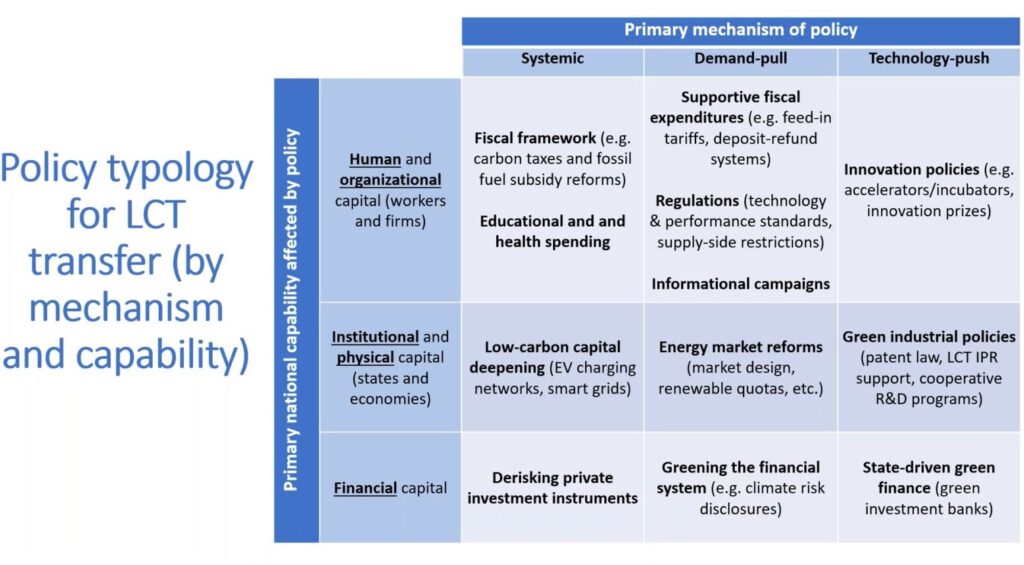
Well-designed policies, combined with technological improvement, can also contribute to lower costs of renewable energy technologies, thus accelerating the process of the diffusion of innovation, explain the authors. There are some encouraging recent trends: between 2010 and 2018, for example, the cost per gigawatt of installed capacity fell by almost 80% for utility solar photovoltaic, 54% for energy storage, and 22% for onshore wind, according to the International Energy Agency.
Finally, the coherence and consistency of policies are crucial to support low-carbon technology transfer and innovation. Importing, producing, and innovating all rely on a set complementary of inputs such as human, organizational, institutional, physical and financial capital. Policies should seek to enhance these national capabilities through mechanisms appropriate and adequate in respective national contexts (Fig. 5). Done well, these policies – and the low-carbon technologies they foster – can help countries achieve a more sustainable, prosperous, and equitable world.
Watch the webinar:





